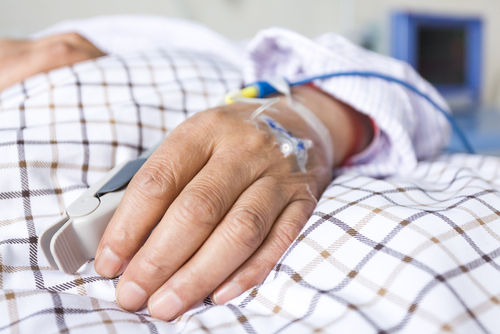Musculoskeletal Ultrasound is Best Method for Managing Hand Arthritis in Sjogren’s, Study Says
Written by |

Musculoskeletal ultrasound is better than clinical examination and blood tests for the best management of hand arthritis in Sjogren’s syndrome patients, according to a new study.
The findings were presented recently at the European Lupus Meeting 2018, in Düsseldorf, Germany, in an abstract titled “PS6:120 Hand ultrasound guided therapeutic decisions in inflammatory arthritis associated with systemic lupus erythematosus and sjÖgren’s syndrome.”
Musculoskeletal ultrasound is an imaging tool that uses sound waves to produce images of muscles, tendons, ligaments, and joints throughout the body. It is emerging as an exciting and reliable tool for diagnosing and managing rheumatic diseases.
However, the use of musculoskeletal ultrasound in the diagnosis and management of systemic lupus erythematosus (SLE) and Sjogren’s syndrome patients, both inflammatory disorders, is not well-established.
Therefore, researchers analyzed a group of patients with SLE and Sjogren’s who had clinical symptoms indicative of arthralgia/arthritis for an assessment of hand joints using musculoskeletal ultrasound.
The goal of the study was to review the patients’ characteristics, and to correlate findings from the ultrasound with clinical and laboratory markers, as well as disease activity scores. The scores used in this study were ESSDAI — EULAR Sjögren’s syndrome disease activity index — an indicator of Sjogren’s activity, and BILAG, which is British Isles Lupus Assessment Group, an indicator of SLE activity.
Researchers used the OMERACT US scoring system to assess the patients’ wrists, and other surrounding joints in both hands. OMERACT — Outcome Measures in Rheumatology — is a consensus scoring system to measure bone erosion.
Results showed there was no correlation between the total PD (power Doppler) score – the measure of the musculoskeletal ultrasound — and the BILAG and ESSDAI scores.
Additionally, there was no correlation between the total Grey Scale score, which measures the the degree of synovial hypertrophy — thickening of the synovium — and the BILAG or ESSDAI scores.
Results from the ultrasound showed that 27.8% of SLE and 21.7% of Sjogren’s patients had joint inflammation. Also, more than 50% of SLE patients had erosions, while more than 33% of Sjogren’s patients did.
Interestingly, results from the ultrasound assessment prompted the physicians to change the treatment of patients, which included optimizing immunosuppressive therapy or analgesia. These changes would have not been enacted otherwise based solely on BILAG/ESSDAI scores.
“US [ultrasound] examination was proven superior to clinical examination and blood test results for optimising the management of hand arthralgia/arthritis associated with SLE and SS,” researchers concluded.
Researchers added that future research should work to determine whether the development of erosions can be prevented if a patient is diagnosed and treated earlier for inflammatory arthritis associated with SLE and Sjogren’s.





